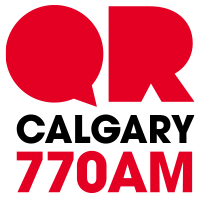Reduce greenhouse gas emissions, create jobs, save money on municipal taxes, keep recycling the same as before… these are the benefits of adopting extended producers responsibility (EPR) regulations for paper and plastic packaging, says Calgary’s Ward 14 Coun. Peter Demong.

“Everybody wins. Nobody loses,” Demong told Global News. “Some people get more money.”
A recent city committee meeting forwarded a recommendation to council to push for packaging EPR across the province.
The Organisation for Economic Co-operation and Development (OECD) defines EPR as “an environmental policy approach in which a producer’s responsibility for a product is extended to the post-consumer stage of its life cycle.”
According to a study done for the Alberta Urban Municipalities Association (AUMA), the cities of Edmonton and Calgary and the Canadian Stewardship Services Alliance, a provincewide EPR could save $107 million a year in recycling costs and create about 219 jobs.
Recycling could go up by 13 per cent, and it would avoid greenhouse gas emissions equivalent to 15,000 cars per year.
City of Calgary data shows that 330,000 households are part of the blue cart recycling program. In 2019, the city collected 52,000 tonnes of recyclables in the blue carts and community recycling depots.
Alberta has EPR regulations for items like beverage containers, but is the only province west of Quebec to not have any EPR program for paper and plastic packaging, instead leaving it up to municipalities.
The cost of recycling paper and plastic packaging is borne by municipalities across Alberta, who in turn fund that through taxpayers. An EPR shifts those costs onto the paper and plastic manufacturers.
Demong wants that $107 million passed along to homeowners and ratepayers across the province, and said it would equate to an eight per cent savings on their municipal taxes.
“This is not chump change,” the Ward 14 councillor said.

Get breaking National news
“This is significant dollars that we could be rebating back to our constituents and customers.”
“And for the life of me, I don’t understand why the Alberta government wouldn’t be doing this.”
Thursday, the AUMA passed a resolution stating that municipalities would pass along any savings from a province-wide EPR to taxpayers.
Demong characterized conversations about EPR with Environment Minister Jason Nixon as “favourable,” but the provincial government has yet to announce an EPR framework for packaging.
“Increasing the lifecycle of plastic products creates jobs and attracts investment all while reducing environmental impacts,” Jess Sinclair, press secretary for Nixon, said in a statement.
“In addition, we are currently exploring ways to save ratepayers and municipalities money when it comes to recycling plastics, hazardous household waste and packaging and paper products.”
The plastics industry is largely in favour of Alberta adopting an EPR for plastic packaging and that industry pay for all related recycling costs, according to the Chemisty Industry Association of Canada (CIAC), whose members include plastics manufacturers.
“If it’s a 100 per cent paid for and managed extended producer responsibility system, then producers are incented to put a product into the market that’s recyclable,” Greg Moffatt, CIAC senior director of business and economics, told Global News. “They manage the recovery of that product.”

“Advanced recycling is unique in that what we’re really talking about is taking that plastic and, through chemical processes, taking it back to its building blocks so it could be reused in another plastic item and continue its way through the economy.”
That process of initial plastic manufacturing, use by a consumer, breaking it down into its chemical components and manufacturing into another product is known as a circular economy, and is a goal for the CIAC and its members.
“The last thing we should be doing with it is landfilling it or in some way, shape or form, allowing for it to enter into the environment.”
Demong hopes that Alberta gets some manner of an EPR framework in place soon.
“If, at the end of the day, an EPR program were to roll out in Alberta and is only offering 50 per cent coverage, I’ll take that every day of the week,” he said. “That’s 50 per cent more than what I’ve got now.
“And it’s a step in the right direction.”











Comments